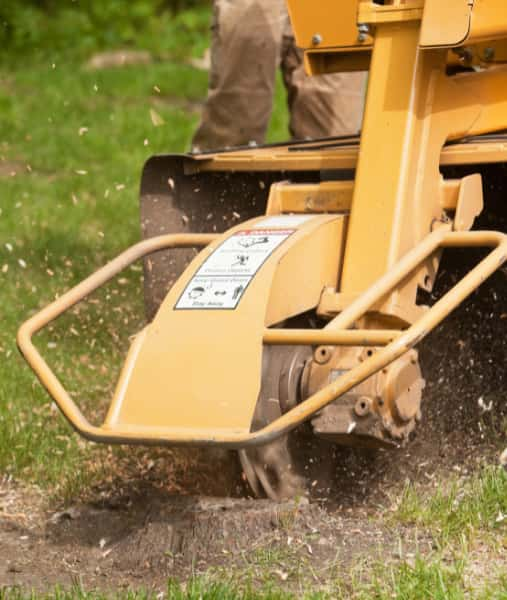Trees are a vital part of our environment, providing beauty, shade, and improving air quality. However, like all living things, trees are susceptible to disease, decay, and other hazards that can compromise their health and safety. Early detection of these issues is crucial to preventing potential hazards and ensuring the longevity of your trees. At EM Tree Surgery Dursley, based in Dursley, Gloucestershire, we specialise in identifying and addressing hidden tree health problems before they escalate. In this blog post, we’ll explain why early detection in tree health is essential and how it can protect both your property and the trees themselves.
1. Why Early Detection Matters
Trees may appear healthy on the surface, but underlying issues can threaten their stability and overall health. From root decay to pest infestations, early detection allows for swift intervention, preventing further damage.
- Preventing property damage: Trees with structural weaknesses, decayed roots, or large dead branches can pose significant risks to nearby buildings, vehicles, and people. Identifying these problems early can prevent accidents or damage.
- Promoting tree health: Catching disease or decay in its early stages allows arborists to take corrective action, such as pruning infected branches or treating the tree with appropriate care, improving its chances of recovery.
- Saving costs: The longer tree health issues go unnoticed, the more expensive the treatment or removal process can become. Early detection helps minimise these costs and avoids the need for emergency tree removal.
2. Common Hidden Tree Hazards
Some tree hazards can be hard to spot without professional expertise, but knowing what to look for can help you stay proactive in maintaining the health of your trees. Below are a few common issues that often go unnoticed until they become serious problems.
- Root rot: Root rot can be a hidden but deadly problem for trees. If roots become infected with fungi, they weaken and decay, compromising the tree’s stability. Symptoms may include thinning leaves, stunted growth, and a sudden lean in the tree’s posture.
- Pest infestations: Insects such as wood-boring beetles or aphids can burrow into the tree and cause extensive damage from the inside out. Early signs might include small holes in the bark, sticky residue, or a decline in foliage health.
- Fungal growth: Fungi growing on or around the base of a tree is often a sign of internal decay. While some fungi may seem harmless, certain types indicate serious rot, which can weaken the tree’s structure over time.
- Deadwood: Dead or dying branches may not always be immediately noticeable but can pose serious safety risks if they fall unexpectedly. Regular inspections help identify deadwood early, allowing for timely removal.
3. Signs That Your Tree Needs an Inspection
It’s important to regularly inspect your trees for signs of ill health or structural problems. Some indicators that a professional tree surgeon should assess your tree include:
- Visible cracks in the trunk: Large cracks or splits in the tree trunk may indicate internal damage or weakness. These cracks can increase the risk of the tree falling during high winds or storms.
- Leaning trees: While some trees naturally lean, a sudden or increasing lean can indicate root damage or instability. Immediate inspection is needed to prevent the tree from falling.
- Discoloured or wilting leaves: If your tree’s leaves are discoloured, wilting, or falling out of season, this could be a sign of disease or pest infestation. Catching these problems early is crucial for effective treatment.
- Unusual growths or fungi: Unnatural growths on the bark, as well as fungi or mushrooms around the base, are often signs of decay or rot. These need to be evaluated by an expert to determine the severity of the issue.
4. How EM Tree Surgery Dursley Can Help
At EM Tree Surgery Dursley, we offer comprehensive tree health assessments to identify hidden hazards and ensure the long-term well-being of your trees. Our professional arborists are trained to spot subtle signs of disease, decay, and structural issues that may not be obvious to the untrained eye.
- Detailed inspections: Our team conducts thorough visual and diagnostic inspections to detect any early warning signs of health problems. We examine the trunk, branches, leaves, and roots for symptoms of decay, pest damage, or stress.
- Expert solutions: Once we identify an issue, we recommend and implement the most effective solutions, whether it’s pruning diseased branches, treating pest infestations, or providing targeted fertilisation to improve tree health.
- Safe removals: If a tree is beyond saving and poses a risk to your property, we can safely and efficiently remove it, ensuring that your home and surrounding landscape are protected.
Conclusion
Maintaining the health of your trees requires vigilance and expertise, especially when it comes to detecting hidden hazards before they lead to more serious problems. At EM Tree Surgery Dursley, we are committed to providing the highest level of tree care, helping you safeguard your property and preserve the beauty of your trees for years to come.
Call us on: 01453 708 172
Click here to find out more about EM Tree Surgery Dursley
Click here to complete our contact form and see how we can help with your trees needs.

